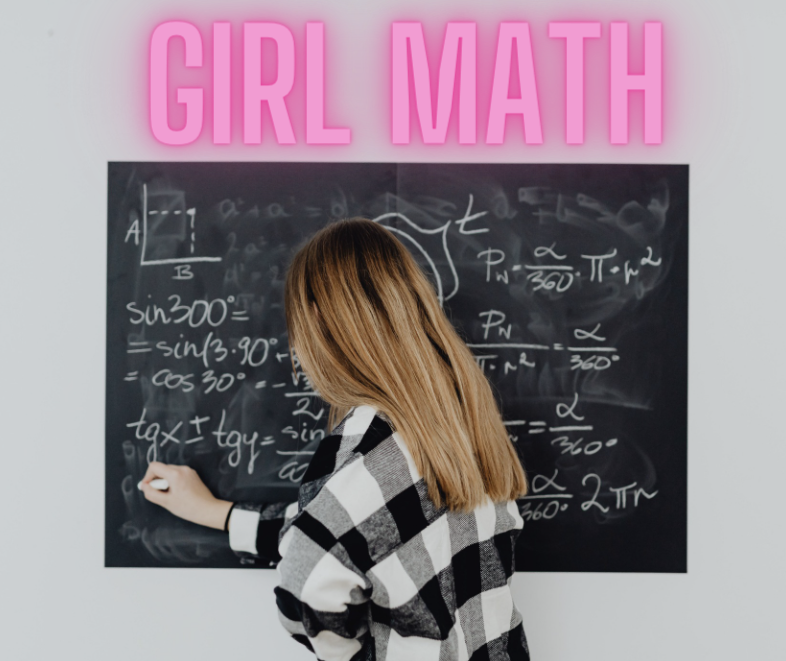Girls across the world have recently taken to TikTok to share a universal method of decision-making: girl math. At its core, girl math is a broadly utilized justification to “balance out” certain choices.
To some, it makes little to no sense, but to girls, it’s a language that went unspoken until social media acknowledged it. Looking at examples and the origins of girl math might help make sense of the concept to outsiders.
One of the more comprehensible examples of girl math is free shipping. An anonymous student shared information about a recent Aerie underwear sale, where 10 pairs ran for $38. It would be a financial loss to buy fewer than those 10 pairs and, to top it off, shipping was free if you hit a $50 total.
Girl math can span beyond finances, as Emma Shupp ’26 shared, she balances out a few Reese’s Peanut Butter Cups with extra water throughout her day. Even if a nutritionist disagrees with this line of reasoning, to many it makes sense in the same way as rewarding yourself with McDonald’s on the way home from a rigorous workout.
These examples beg the question of why girl math exists. Looking back in women’s history in terms of their financial and proprietary ownership, it was not until 1974 that women could have their own bank account without their husband signing off on it. Even then, the woman was not often the breadwinner in a “traditional” family structure, so more often than not, the money in those accounts either wouldn’t sustain independent living or would ultimately belong to their husbands.
Media from the mid-20th century also reflected men’s frustration with women’s spending habits, as shown in a clip from “I Love Lucy.” While Lucy did spend close to $30,000 on furniture, this was likely an exaggerated look at what the repercussions of excess spending might have looked like. Women were often allotted an allowance by their husbands to spend, but did Ricky expect Lucy to be able to be a homemaker and not put time and funds into making their home perfect? To this day, the stereotype of women loving to shop has negative connotations, implying women are less financially intelligent.
On a deeper level, women carry significantly more guilt than men. A Psychology Today article unpacked the “self-destructive habit called guilt,” mentioning that empathy has morphed into this negative feeling as a result of the culture we live in (and have lived in since the dawn of humans). On its surface, girl math might seem to be a fun outside-of-the-box way of thought, it doesn’t make sense why so many women think the exact same way. The college generation might see “I Love Lucy” and believe it was years ago, but engrained generational thoughts take a long time to become extinct.
To all the women in the world who use girl math to justify inconsequential purchases or eating an extra snack in a day, it’s important to remember that you owe no one an explanation. It’s okay to openly enjoy a Dunkin Donuts iced coffee or spend an extra $5 to hit that free shipping, but make those decisions for yourself, not as a means to prove yourself to others. Embrace the humor of girl math, but don’t let it intrude on the simple joys of your life.



